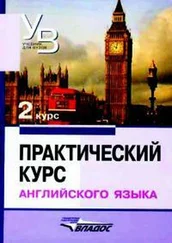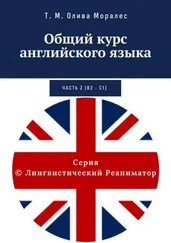портфеле много тетрадей? — Не очень, две или три. — На доске много
мела? — Да, я так думаю. 7. На вашей улице много домов? — Да, у нас
много красивых новых домов. — В вашем парке много цветов? — Не
очень, но они мне очень нравятся
89
XVIII.
Write 4 examples on each of the models.
M o d e l 1: There is a lot of paper in the box. M o d e l
2: There are a lot of questions to the text.
XIX.
Translate into English the words given in brackets:
1. There is (много) paper on the desk. 2.,There are (много) students in the
classroom. 3. There is (немного) milk in the jug. 4. There are (миотб)
newspapers on the shelf. 5. There is (м&ого} time left. 6. There is (много)4
butter on the plate. .7. There are (несколько) notebooks in the bagv8. Give me
(немного)'Water, please. 9. Can you give him (несколько) coloured pencils?
10. May I take (несколько) sheets of paper? 11. There are (много) families in
this house. 12.1 have not (много) money. I cannot buy this coat. 13. There are
not ( M^STO) sentences in this text. 14. Put (немного] salt into your soup.
XX.
Make up questions as in the models. Add something using the topical
vocabulary to Lesson Six. (People's age).
M o d e l 1: How old is Jane ? — She is twenty. M o d e l 2: How old are
these boys ? — They are eighteen years old.
XXI.
Translate the following into English using the preposition at:
1 В десять часов. 2. В семь часов. 3. В двенадцать часов. 4. В
половине первого. 5. В половине третьего. 6. В половине одиннадцатого.
7. В четверть шестого. 8. В четверть восьмого. 9. В четверть десятого. 10.
Без четверти час. 11. Без четверти три. 12. Без четверти четыре. 13. В
двадцать минут девятого. 14. Без десяти двенадцать. 15. Без двадцати
пяти пять. 16. В десять минут седьмого. 17. Без пяти шесть. 18. Без трех
минут шесть. 19. Без семи девять. 20. Без двадцати восьми три.
ХХП. a) Write down the following numerals in words:
134, 298, 355, 948, 3526, 9011, 193, 561, 7 506 017, 35 616 234.
b) Read the following numerals and telephone numbers quickly:
104, 151, 175, 189, 1012, 1017, 1038, 2568, 4083, 5993, 6410f 10 784,
257 629, 841 403, 2 184 001; 134-86-78, 253-64-92, 289-47-30.
XXIII. Translate the following sentences into English:
1 . Много ли студентов в этой комнате? — Нет, не много. 2. В
середине этой комнаты стол. На столе цветы. 3. В нашей квартире пять
комнат. Они большие и светлые. 4. Где твой брат? — Он в той комнате 5.
На столе нет хлеба. 6. Наш университет находится недалеко от центра 7.
На этой улице много больших домов. 8. В этой комнате много света 9.
90
Олег в 105 группе. 10. Нелли в 102 группе. 11. Борис в 501 группе. 12.
Читайте текст 9 13. Сделайте упражнение 2 на доске. 14. У доски нет
мела. 15. На столе много ручек, карандашей и тетрадей. 16. Есть ли
яблоки на тарелке? 17. Яблоки в корзине. 18. Чашки на столе. 19. Ваш
племянник в школе? — Нет, он дома. 20 В нашей группе не десять, а
девять студентов. 21. На этом столе много коробок? — Нет, не много. 22.
В нашей комнате не три, а четыре окна. 23. Приходите в шесть часов. 24
Возвращайтесь в половине десятого. 25. Джеймс — восьмилетний
мальчик, его сестра — шестилетняя девочка. 26. Скажи мне, пожалуйста,
твой телефон. Пожалуйста. Запиши. 338-29-41. 27. Сыну Питера 7 лет.
Сестре Артура 15 лет Бабушке Тома 68 лет.
XXIV.
a) Write a short composition about your family (your friend's family),
the family of a well-known person you are interested in. b) Make up dialogues using
the topical vocabulary and conversational phrases of Lessons Five, Six, Seven.
XXIV.
a) Bring your family photo in class and get ready to tell your fellow-
students of all the members of your family, b) Ask and answer questions on the
photo. Describe it.
ADDITIONAL PHONETIC EXERCISES
1. Read the exercises several times before the mirror.
2. Record your reading and listen to it, detect yourerrors.
3. Listen to your fellow-student reading the exercise. Detect his errors
in sounds and intonation and tell him what he must do
to get rid of
them:
из —tea —шэ э -> пз хкэ:пэ 'botl
'rotn
dis — des — duo э -> spes vminU 'dAbl
'psetn
mi3 — тез — тиэ э -> риэг ха&штэ1 'simpl
'hidn
■ndl
fVbidn
LABORATORY WORK
I. a) Listen to the questions and record your answers in the intervals,
d) Listen to the key and correct your mistakes.
II. a) Make the sentences interrogative and negative. Record your sentences.
91
b) Check your sentences with the key.
III. a) Make questions beginning with What ... using the statements, b) Make
questions beginning with How many ... using the combinations of words, c) Make
questions beginning with How much ... using the combinations of words.
IV. Form special questions using the statements. (The questions should be formed
to the given word.)
M o d e l : My sister is at the University, (my sister) Who is at the
University?
V. Listen to the sentences. Supply short questions expressing surprise, doubt.
V. Change, the sentences as in the model.
VII.
Give sentences opposite in meaning to the given ones.
M o d e l : There are a lot of pens in the box. There
are few pens in the box.
VIII.
Listen to the disjunctive questions. They are not true to fact.
Correct them.
Lesson Eight
A
Читать дальше

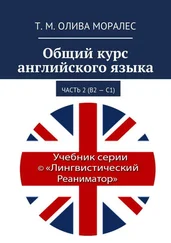

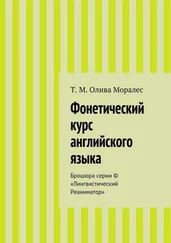
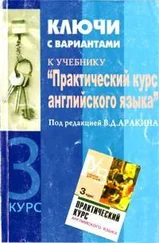
![Владимир Аракин - Практический курс английского языка 3 курс [calibre 2.43.0]](/books/402486/vladimir-arakin-prakticheskij-kurs-anglijskogo-yazyk-thumb.webp)

